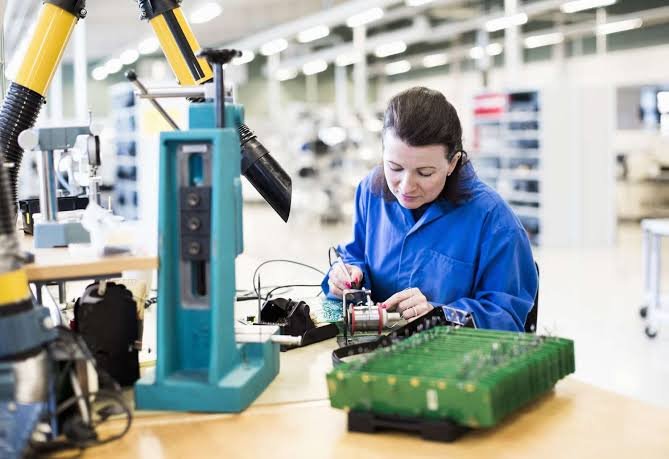Staying ahead in electronics requires one to prioritise innovation. One area that has seen remarkable advancements in recent years is the field of High Density Interconnect Printed Circuit Boards or HDI PCB. These sophisticated components are revolutionising how electronic devices are designed and manufactured, offering unprecedented efficiency and performance.
Revolutionising Circuit Complexity and Efficiency
The essence of these advanced circuit boards lies in their ability to support more complex and efficient designs. Unlike traditional circuit boards, they utilise a much denser configuration of components and connections. This density is achieved through finer lines and spaces, smaller vias (holes), and higher connection pad densities. This design enables more functions per unit area, which is crucial for modern electronic devices that demand high-speed signal transmission and miniaturisation. The use of finer geometries in these boards allows for more intricate circuit designs, accommodating more advanced chip technologies. Additionally, the improved layout also contributes to better heat dissipation, a vital aspect for maintaining the longevity and reliability of electronic devices.
Enhancing Signal Integrity and Speed
Signal integrity is a critical aspect in the performance of electronic devices. These circuit boards significantly improve signal integrity by reducing signal loss and cross-talk, thanks to their compact and efficient design. This is particularly important for high-frequency applications, where maintaining signal integrity is challenging. As a result, devices with these boards exhibit faster processing speeds and more reliable performance. The enhanced signal integrity also opens up new possibilities for applications in high-speed data communication and advanced computing. Furthermore, the reduced electromagnetic interference (EMI) in these designs ensures that devices can operate smoothly in increasingly crowded electronic environments.
Meeting the Demand for Miniaturisation
As electronic devices become smaller and more powerful, the need for miniaturisation in circuit board design becomes more pronounced. These circuit boards are at the forefront of meeting this demand. Their small size and high-density component placement allow for the development of smaller, more compact devices without compromising functionality. This trend is evident in the latest smartphones, wearable technology, and medical devices, where space is at a premium. The miniaturisation trend not only enhances the portability of devices but also paves the way for innovative product designs that were previously impossible. This compactness is especially crucial in medical and aerospace applications, where space and weight are critical factors.
Driving Cost-Effective Manufacturing Processes
Despite their complexity, innovations in these circuit boards also contribute to more cost-effective manufacturing processes. Advanced production techniques, such as laser drilling and direct imaging, have made the fabrication of these boards more efficient and precise. This efficiency not only reduces production costs but also minimises waste, leading to a more economical and environmentally friendly manufacturing process. The adoption of these advanced manufacturing techniques not only reduces the turnaround time for production but also ensures higher quality and consistency in the final products. This aspect is particularly beneficial for industries that require high-volume production with stringent quality standards.
Adapting to Diverse Industry Needs
The versatility of these circuit boards extends beyond consumer electronics. They are increasingly being adopted in various industries, including aerospace, automotive, and telecommunications. Their ability to support complex, high-speed electronic systems makes them ideal for applications where reliability and performance are paramount. As industries continue to evolve, the adaptability of these boards to various technological needs underscores their significance in modern electronics. This adaptability is not just limited to technical capabilities but also encompasses the ability to meet diverse environmental and operational conditions, ranging from the extreme temperatures of space to the high-vibration environment of automotive applications.
In conclusion, the impact of HDI PCB technology on the electronics industry cannot be overstated. From enabling more complex and efficient designs to driving cost-effective manufacturing processes, these innovations are at the heart of the modern electronics revolution. As technology continues to evolve, the role of these circuit boards in shaping the future of electronics remains more significant than ever.



